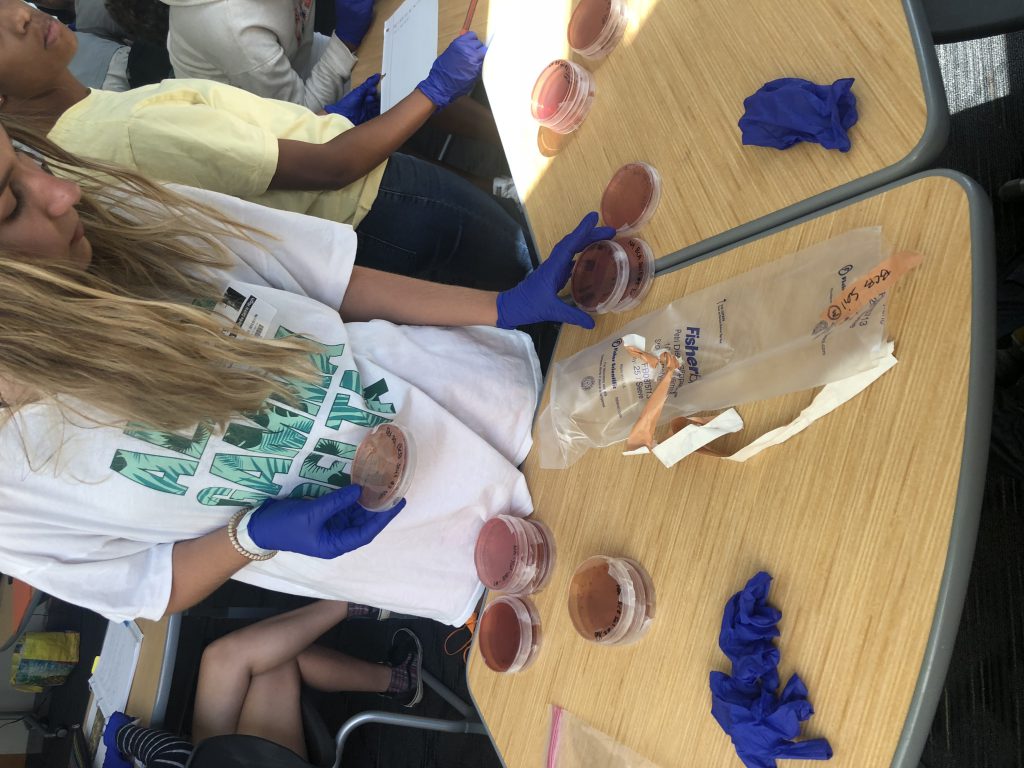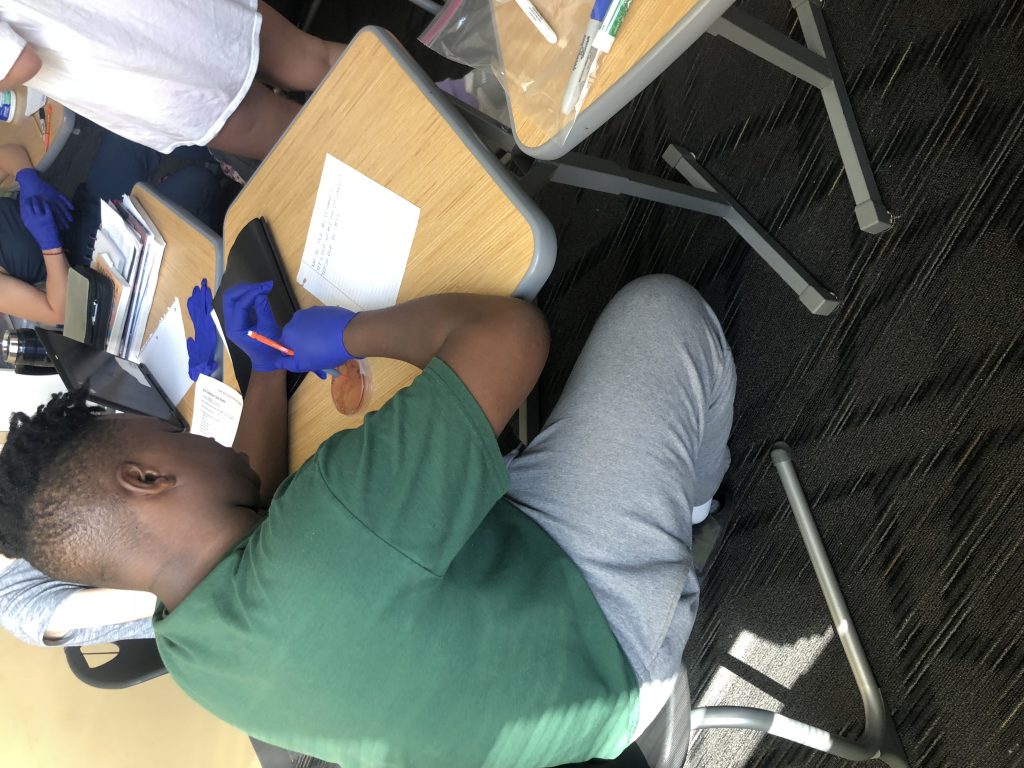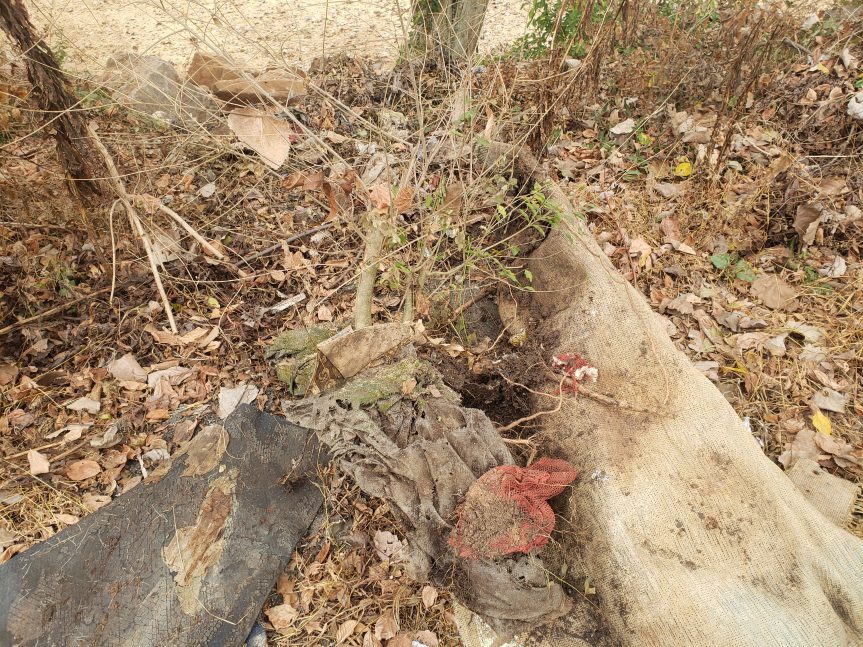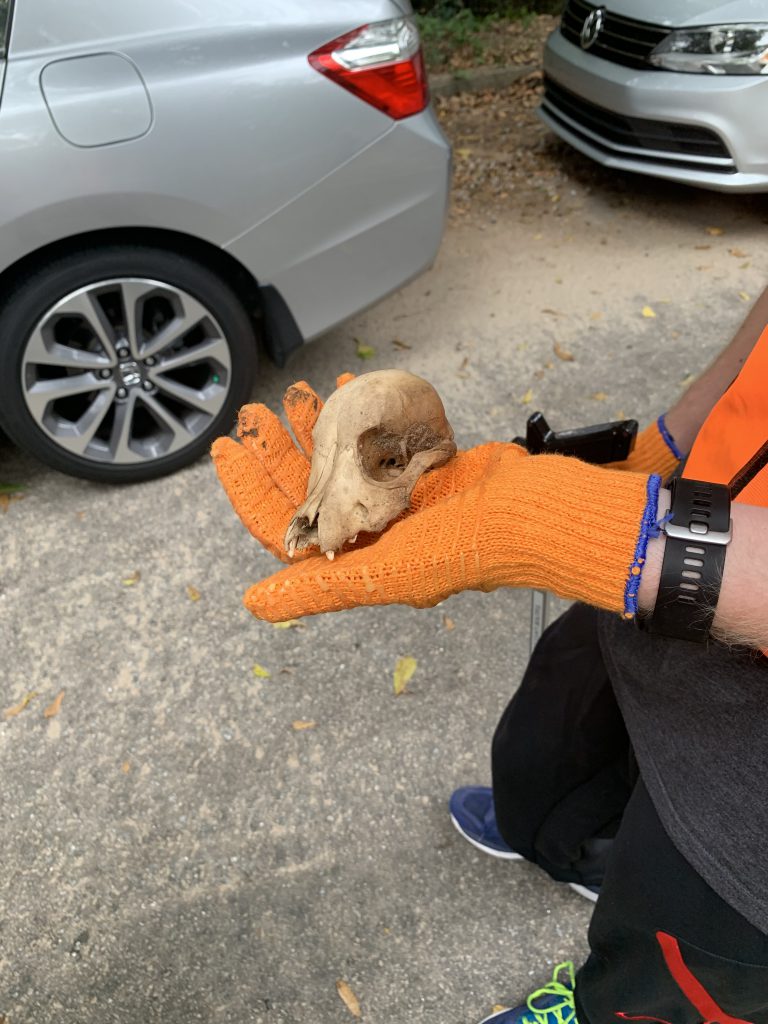By Eryn Hasty
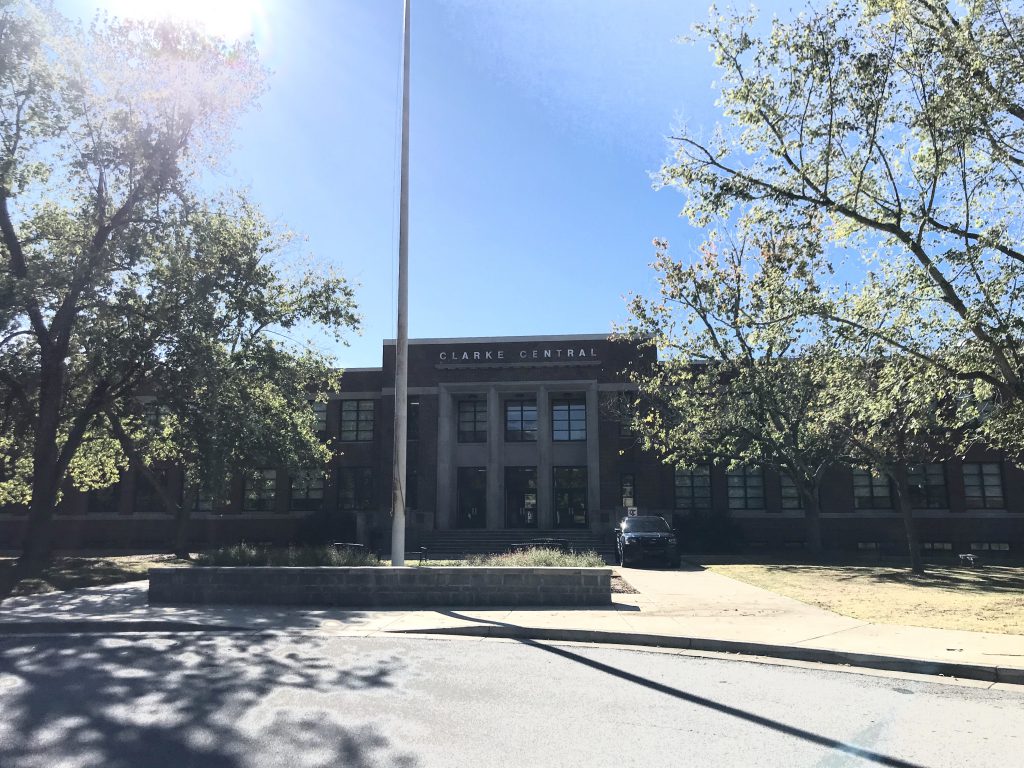
On Friday, August 27, 2019 I went to Clarke Central High School to work with Mr. Gonzalez’s AP Environmental class. A few weeks prior, the CCHS students collected soil samples and had them sent to UGA for my biology class to plate samples of and test for bacteria in the soil. After plating different soil dilutions on three types of plates that contained varying amounts of antibiotics we counted the number of colony forming units for the plates. With this data we were able to analyze how bacteria in soil samples from different areas have different antibiotic resistance characteristics.
Prior the students and I did research about antibiotic resistance so we would have a general understanding for the concept. The reason we needed to do this was so that we understood what we were testing for with the varying amounts of antibiotics on the plates. I may use this similar method in the future if I am running any kind of experiment. The research I did helped me understand any background facts I may need to know as well as help me form my hypothesis based on this background knowledge.
I first explained how my class performed the experiment of plating the soil in the lab. I did this so they knew how the soil can be plated and bacteria can be grown. If the did not know this they would not be able to explain their findings as effectively, and they would not be able to replicate the experiment in the future. I also explained that we were looking for the number of colony forming units (CFU’s) that are on the plates and what a CFU is. After this I let them count the CFU’s on the different plates. I then explained how to actually run the calculations and enter the data into the PARE site before letting them complete it. I gained my information for the topic through readings, instructions, and completing the same tasks on my own a few days prior. Presenting the topics helped me understand the data as well, especially because I learn best by teaching others.
I tried to make the project intellectually stimulating by letting them do everything. I did not count or perform calculations, just explained. I found the students were more engaged as they completed it on their own. I also made sure to keep the information in terms they would understand so it would be relevant. I could tell each student was very smart, but also, they are only freshman in high school. I had to be sure they were following along and were not afraid to ask questions if they were confused. Finally, I tried to be creative by asking them questions and have them try to figure out the answer on their own before telling them the correct answer. This way I was not just reciting information to them in a boring way.
Through this project I learned I really enjoy teaching. I have always had leadership qualities, but this is one of the first times I have been able to take a major role as a teacher. I also realized the students were a lot more interested than expected. I was worried I would go into this project and the students would not care what was going, but they surprised me and were very interactive!
I went in with the mindset I would feel out how confident they were in taking charge on the project. I could tell which students were more outgoing compared to those who were very shy. I focused more on interacting with the more shy students to ensure they were participating, and the more I asked them questions the more into the group project they became. I realized this was an effective method that helped me reach the entire audience, so I will most likely do this in the future too.
The entire project as a whole went well, especially with the part of the project where I instructed the students on how to analyze the data. Next time I would practice a little before how I would lead them just for timing purposes because we were a little crunched for time.
By teaching the content I had to know it very well in case the students had questions. This helped me prepare by studying the information in a detailed manner, and they even asked some questions I did not even know I had! It helped me expand my knowledge with them. I can definitely use this in the future because I am pursing a career in nursing so my information delivery is very important. The project helped familiarize me with communicating effectively with those I do not know. I feel like everything I wanted to teach the students came across how I planned. There were a few times I had to clarify, but overall I was very effective.
Overall, the project was very effective and interesting to me. It helped numerous groups of people (high school and college aged) residents in the area become more aware of a serious situation we face right here in Athens, Georgia. I really enjoyed the project and hope to do something similar again in the future!

